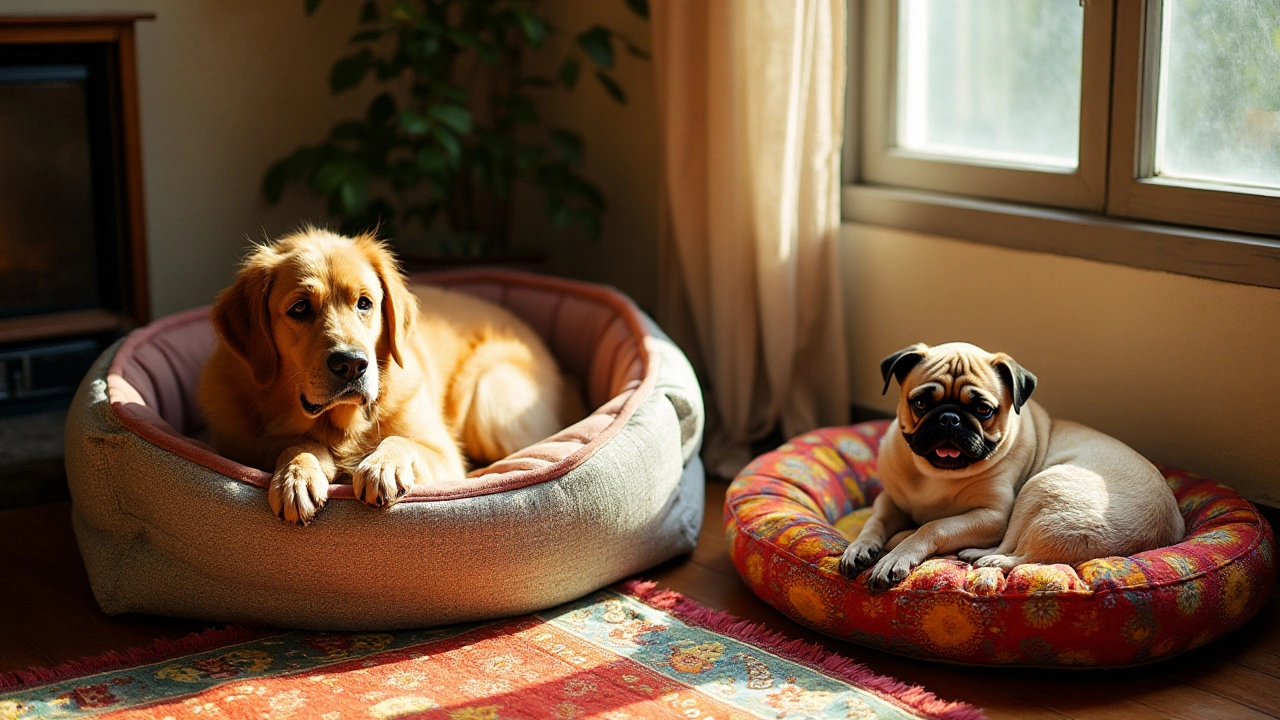Pet Sleep Tips: Simple Ways to Help Your Dog, Puppy, or Cat Rest Better
Struggling with a pet that tosses and turns all night? You’re not alone. Most owners notice that a good night's sleep makes their furry friend calmer, healthier, and more playful. Below are practical steps you can start using tonight.
Create a Calm Sleep Environment
First thing’s first: make the sleeping area cozy and low‑stress. Keep the spot away from loud appliances, bright lights, or heavy foot traffic. A quiet corner with a soft bed works for most dogs and cats. If your home is noisy, consider a white‑noise fan or a gentle music playlist designed for pets.
Temperature matters, too. Dogs and cats prefer a room that’s around 68‑72°F (20‑22°C). Too hot and they’ll pant; too cold and they’ll curl up in a shivery ball. A lightweight blanket for a short‑haired dog or a heated pad for an older cat can make a big difference.
Safety is key. Remove any cords or small objects that a curious puppy could chew on. For cats, a high perch or a covered cat cave gives them a sense of security without feeling trapped.
Tailor Sleep Strategies to Your Pet’s Age and Species
Babies need more naps than adults, and the same goes for puppies and kittens. An 8‑week‑old puppy should get 18‑20 hours of sleep a day, split between nighttime and short daytime naps. Set a consistent bedtime, and stick to it—even on weekends.
Older dogs often develop joint pain that wakes them up. A joint‑support supplement, a cushioned ortho‑bed, and a short evening walk can ease stiffness and keep them asleep longer.
Cats are natural hunters and love to be active at dawn and dusk. Provide interactive toys before bedtime so they can burn off energy. A small snack of protein right before sleep can also help them settle.
If your dog sleeps in a crate, check the age. Most puppies outgrow the need to crate‑sleep by 4‑6 months. Transition them to a regular dog bed when they start showing signs of restlessness in the crate—like pacing or whining.
Sometimes sleep problems signal health issues. Frequent coughing, excessive drooling, or sudden restlessness could mean a dental problem, allergies, or an ear infection. If you notice odd behavior, a vet visit is worth the time.
Finally, keep bedtime routines consistent. A short walk, a gentle brush, and a calm voice signal that it’s time to wind down. Pets love predictability; the more you repeat the same steps, the quicker they’ll settle.
Try one or two of these tips tonight and watch your pet’s sleep improve. A well‑rested pet means a happier home for everyone.

What Dog Beds Make Our Furry Friends Feel Right at Home?
Dogs, much like us, have unique preferences when it comes to their sleeping quarters. The variety of dog beds available in the market cater to the diverse needs of dogs, providing comfort, warmth, and a sense of security. The right dog bed can significantly improve a dog's quality of sleep and overall well-being. It's important to consider factors like size, material, shape, and additional features like orthopedic support when choosing a dog bed for your pet. Understanding these preferences can also help in creating a cozy and inviting space for your furry friend.
read more


